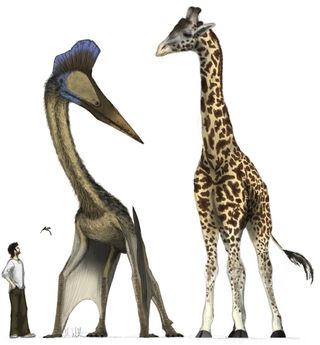Amazing Adaptations of the First Flying Animals

The first flying animals didn't shrink from a little competition, a new study finds. In fact, these flying reptiles, or pterosaurs, tried all sorts of experiments to stay ahead when birds arrived on the scene, from eating seeds instead of meat to losing all of their teeth.
This pattern of evolution is unusual, researchers reported today (July 6) in the Journal of Systematic Paleontology.
"Usually, when a new group of animals or plants evolves, they quickly try out all the options, said study researcher Katy Prentice, a student at the University of Bristol. "When we did this study, we thought that pterosaurs would be the same. … But the amazing thing is that they didn't begin to evolve until after the birds had appeared."
Prentice and her colleagues looked at 50 different pterosaur species ranging from the size of a blackbird to the size of a giraffe. The giraffe-sized pterosaur, Quetzalcoatlus, had a wingspan of 39 feet (12 meters). They may have strolled across ancient prairies snapping up small dinosaurs as snacks just as a modern-day crane might target frogs and toads.
The findings revealed that pterosaurs became three times as diverse 125 million years ago than they were before birds evolved. Birds and flying reptiles shared the skies until 65 million years ago, when the mass extinction that killed the dinosaurs took out Quetzalcoatlus and its relatives as well.
You can follow LiveScience senior writer Stephanie Pappas on Twitter @sipappas. Follow LiveScience for the latest in science news and discoveries on Twitter @livescience and on Facebook.
Sign up for the Live Science daily newsletter now
Get the world’s most fascinating discoveries delivered straight to your inbox.

Stephanie Pappas is a contributing writer for Live Science, covering topics ranging from geoscience to archaeology to the human brain and behavior. She was previously a senior writer for Live Science but is now a freelancer based in Denver, Colorado, and regularly contributes to Scientific American and The Monitor, the monthly magazine of the American Psychological Association. Stephanie received a bachelor's degree in psychology from the University of South Carolina and a graduate certificate in science communication from the University of California, Santa Cruz.
Most Popular


